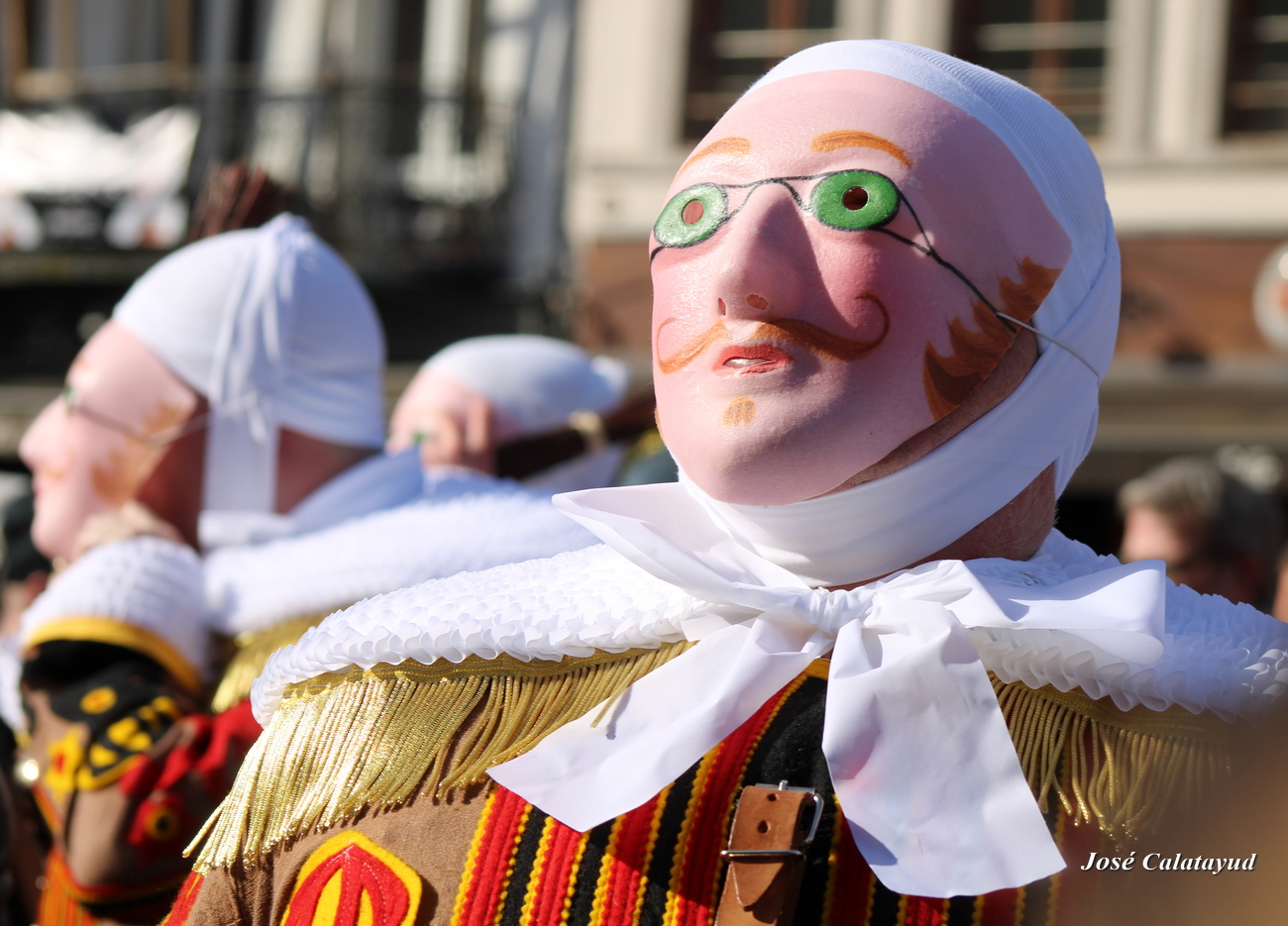The Binche Carnival, listed as Intangible Cultural Heritage by UNESCO, is one of Belgium's most iconic and oldest folk festivals. Held every year during the three days before Lent, it brings the entire town of Binche together in an atmosphere of joy and tradition. The event begins with a series of preparatory festivities, known as the ‘soumonces’, and reaches its climax on Shrove Tuesday with the appearance of the famous Gilles. Dressed in colourful red, yellow and black costumes and wearing imposing hats made of ostrich feathers, they parade and dance to the beat of drums through the cobbled streets of the town, throwing oranges to the crowd as a sign of good luck and prosperity. The festivities culminate in the Grand-Place with traditional dances and a spectacular fireworks display.
The tradition of the Binche Carnival, steeped in centuries of history dating back at least to the Middle Ages, is deeply rooted in the local identity. The organisation is highly codified: only people who have lived in Binche for more than five years can become a Gille, and the traditional costume can only be worn in Binche. In addition to the Gilles, other figures such as Pierrots, Harlequins and Peasants enliven the processions. All contribute to making the carnival a unique celebration, a living testimony to a collective heritage that has been carefully preserved and passed down from generation to generation. The inhabitants proudly participate in making the costumes, rehearsing the music and maintaining rituals that attract thousands of visitors from all over the world every year.
Sources: Perplexity.ai, Wikipedia & Unesco.org




 English
English